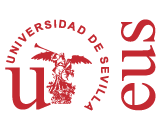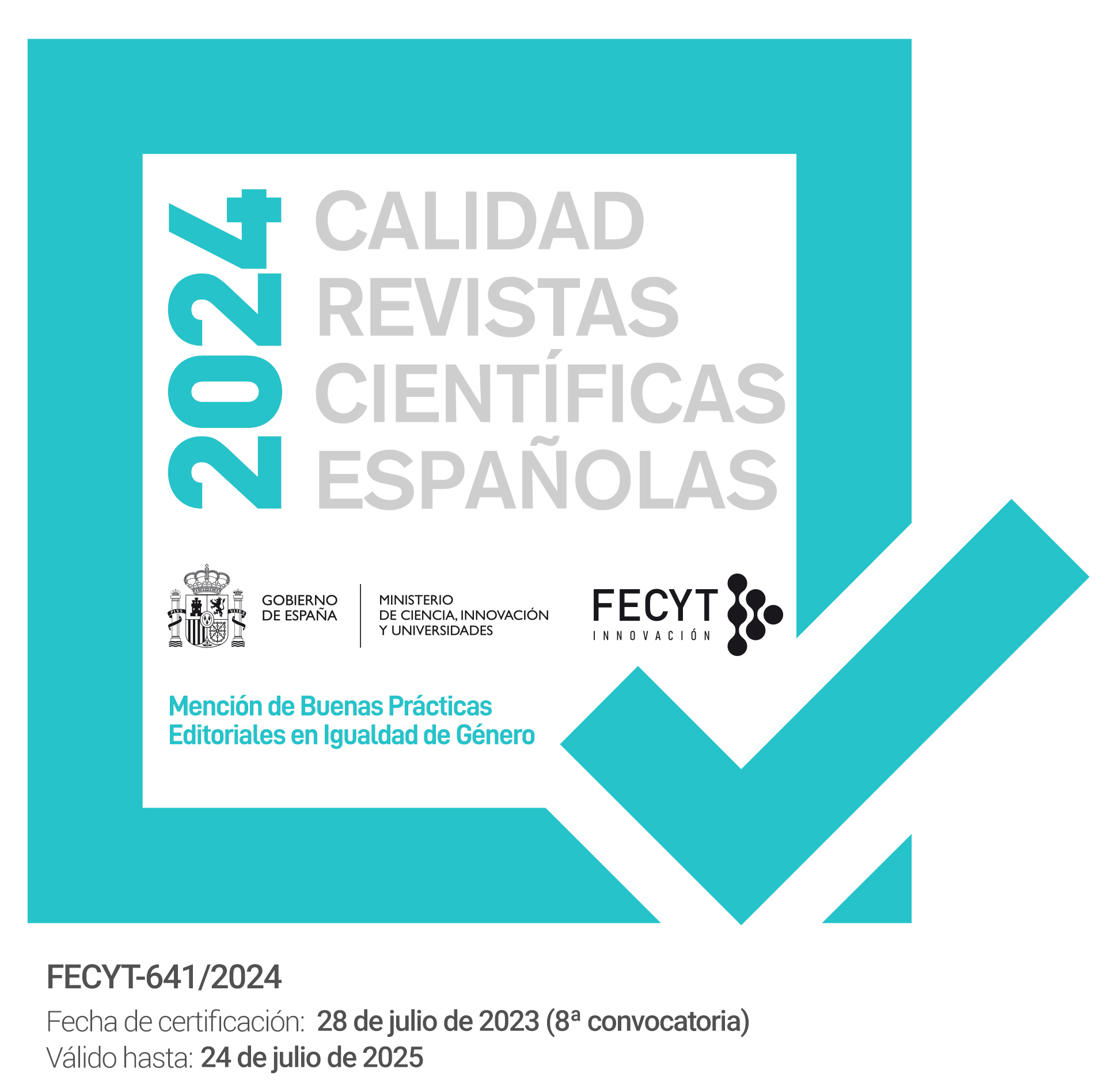The Polyphonic Narration of the Chilean Social Uprising in the Linguistic Landscape of Santiago
DOI:
https://doi.org/10.12795/PH.2024.v38.i01.01Keywords:
linguistic landscape, chilean social uprising, graffiti, polyphony, discourse analysisAbstract
Based on a corpus of 1500 photographs of graffiti, posters, and other written texts, collected in November 2019 in different central neighbourhoods of Santiago, this paper analyses the imbrication between space, linguistic practices, and the process of the politicisation of protest. Firstly, the transgressive semiotics of graffiti (Pennycook, 2009) and its role in the process of de- and re-territorialisation will be explored; secondly, the analysis will focus on the phenomenon of discursive polyphony (Bakhtin, 1981; Ducrot, 1986). From this perspective, the Linguistic Landscape of the Chilean social uprising can be seen as a heteroglossic set of voices, in connection with the immediate context, with Chile’s past since the Pinochet dictatorship, and with global, past, and contemporary protest movements.
Downloads
References
Aguilera, C., Angelcos, N., Barozet, E., Cabrera, A., Espinoza, V., Gutiérrez Crocco, F., Jara, D., Montero, V. y Rojas, M. (2020). 18/O: Personas comunes en movilizaciones extraordinarias. Ciper Chile. https://www.ciperchile.cl/2020/10/17/18-o-personas-comunes-en-movilizaciones-extraordinarias-parte-1/
Bajtín, M. M. (1981). Discourse in the Novel. En C. Emerson y M. Holguist (Trads.), The Dialogic Imagination. Four Essays (pp. 129-422). University of Texas Press. (Obra original publicada en 1975).
Barni, M. y Bagna, C. (2016). 1 March – A day without immigrants: the urban linguistic landscape and the immigrants’ protest. En R. Blackwood, E. Lanza y M. Woldemariam (Eds.), Negotiating and Contesting Identities in Linguistic Landscapes (pp. 55-70). Bloomsbury.
Ben-Rafael, E., Shohamy, E., Amara, M. H. y Trumper-Hecht, N. (2006). Linguistic Landscape as symbolic construction of the public space: the case of Israel. En D. Gorter (Ed.), Linguistic Landscape: A New Approach to Multilingualism (pp. 7-30). Multilingual Matters. https://doi.org/10.21832/9781853599170-002
Ben Said, S. y Kasanga, L. A. (2016). The Discourse of Protest: Frames of Identity, Intertextuality and Interdiscursivity. En R. Blackwood, E. Lanza y M. Woldemariam (Eds.), Negotiating and Contesting Identities in Linguistic Landscapes (pp. 71-83). Bloomsbury.
Blackwood, R., Lanza, E. y Woldemariam, M. (Eds.). (2016). Negotiating and Contesting Identities in Linguistic Landscapes. Bloomsbury.
Blommaert, J. (2013). Ethnography, Superdiversity and Linguistic Landscapes: Chronicles of Complexity. Multilingual Matters. https://doi.org/10.21832/9781783090419
Caiani, M. (2023). Framing and social movements. Discourse Studies, 25(2), 195-209. https://doi.org/10.1177/14614456231154734
Calvi, M. V. (2018). Paisajes lingüísticos hispánicos: Panorama de estudios y nuevas perspectivas. LynX. Panorámica de Estudios Lingüísticos, (17), 5-58.
Cárdenas-Neira, C. y Pérez-Arredondo, C. (2021). Prácticas discursivas insurgentes y ocupación de espacios urbanos: Análisis de los paisajes semióticos creados en dos ciudades de Chile durante la revuelta social (2019-2020). Bulletin of Spanish Studies, 98(7), 1165-1190. https://doi.org/10.1080/14753820.2021.1961458
De Certeau, M. (1984). The Practice of Everyday Life. University of California Press.
Domingo, D. (2020). No era paz, era silencio. El sonido en el paisaje sociosemiótico urbano del “Estallido social” chileno desde los ECDM. Árboles y Rizomas, 2(2), 44-68. https://doi.org/10.35588/ayr.v2i2.4611
Ducrot, O. (1986). El decir y lo dicho. Polifonía de la enunciación (M. Eskenazi, Trad.). Paidós. (Obra original publicada en 1984).
Duque, E. (2016). Las relaciones de discurso. Arco/Libros.
Figueroa Irarrázabal, G. (2006). Sueños enlatados. El graffiti Hip hop en Santiago de Chile. Editorial Cuarto Propio.
Garcés, M. (2019). October 2019: Social Uprising in Neoliberal Chile. Journal of Latin American Cultural Studies, 28(3), 483-491. https://doi.org/10.1080/13569325.2019.1696289
García Agustín, Ó. y Aguirre Díaz, F. J. (2014). Spatial practices and narratives: The GenkiDama for Education by Chilean Students. Journal of Language and Politics, 13(4), 732-754. https://doi.org/10.1075/jlp.13.4.07agu
Garrido, J. C. (2021). Las paredes hablan: genealogía, psicología política y expresiones del rayado masivo de octubre. En J. de la C. Garrido, D. Carrasco y C. Arqueros (Eds.), Conflictividad política en Chile (pp. 13-57). Universidad del Desarrollo.
Goffman, E. (1959). The Presentation of Self in Everyday Life. Doubleday Anchor Books.
Gordon-Zolov, T. y Zolov, E. (Eds.), (2022). The Walls of Santiago. Social Revolution and Political Aesthetics in Contemporary Chile. Berghahn Books.
Gorter, D. (2018). Methods and techniques for Linguistic Landscape research: about definitions, core issues and technological innovations. En M. Pütz y N. Mundt (Eds.), Expanding the Linguistic Landscape: Linguistic Diversity, Multimodality and the Use of Space as a Semiotic Resource (pp. 38-57). Multilingual Matters. https://doi.org/10.21832/9781788922166-005
Guerra Salas, L. (2018). El paisaje lingüístico desde la lingüística perceptiva. Lingue e Linguaggi, 25, 125-143.
Jaworski, A. y Thurlow, C. (Eds.). (2010). Semiotic Landscapes. Language, Image, Space. Bloomsbury.
Kallen, J. L. (2010). Changing landscapes: language, space and policy in the Dublin linguistic landscape. En A. Jaworski y C. Thurlow (Eds.), Semiotic Landscapes. Language, Image, Space (pp. 41-58). Bloomsbury.
Landry, R. y Bourhis, R. Y. (1997). Linguistic Landscape and Ethnolinguistic Vitality: An Empirical Study. Journal of Language and Social Psychology, 16(1), 23-49. https://doi.org/10.1177/0261927X970161002
Latorre, G. (2019). Democracy on the Wall: Street Art of the Post-Dictatorship Era in Chile. The Ohio State University Press. https://doi.org/10.26818/9780814214022
Maly, I. y Blommaert, J. (2019). Digital Ethnographic Linguistic Landscape Analysis (ELLA 2.0). Tilburg Papers in Culture Studies, 233.
Márquez, F., Colimil, M., Jara, D., Landeros, V. y Martínez, C. L. (2020). Paisaje de la Protesta en Plaza Dignidad de Santiago, Chile. Revista Chilena de Antropología, (42), 112-145. https://doi.org/10.5354/0719-1472.2020.60487
Martín Rojo, L. (2001). New Developments in Discourse Analysis: Discourse as Social Practice. Folia Linguistica, 35(1-2), 41-78. https://doi.org/10.1515/flin.2001.35.1-2.41
Martín Rojo, L. (2016). Occupy: La dinámica espacial del discurso en los movimientos globales de protesta. Discurso & Sociedad, 10(4), 610-639. http://hdl.handle.net/10486/679607
Martín Rojo, L. y Díaz de Frutos, C. (2014). En #Sol, revolución: Paisajes lingüísticos para tomar las plazas. Journal of Spanish Cultural Studies, 15(1-2). https://doi.org/10.1080/14636204.2014.982889
Merleau-Ponty, M. (2018). Fenomenologia della percezione. Bompiani. (Obra original publicada en 1945).
Morant Marco, R. y Martín López, A. (2017). Tatuajes urbanos: los susurros, murmullos y gritos de la ciudad. Tirant lo Blanch.
Pennycook, A. (2009). Linguistic Landscapes and the transgressive semiotics of graffiti. En E. Shohamy y D. Gorter (Eds.), Linguistic Landscape: Expanding the Scenery (pp. 302-312). Taylor & Francis Group.
Pennycook, A. (2018). Linguistic Landscapes and Semiotic Assemblages. En M. Pütz y N. Mundt (Eds.), Expanding the Linguistic Landscape: Linguistic Diversity, Multimodality and the Use of Space as a Semiotic Resource (pp. 75-88). Multilingual Matters. https://doi.org/10.21832/9781788922166-007
Pérez Pallares, F. (2018). Reflexiones en torno al uso de metodologías cualitativas en contextos urbanos: la observación flotante y los relatos espaciales en la comprensión de la vida urbana. En R. Guber (Coord.), Trabajo de campo en América Latina (Tomo I, pp. 331-341). Sb editorial.
Pétonnet, C. (1982). L’Observation flottante. L’exemple d’un cimetière parisien. L’Homme. Revue française d’anthropologie, 22(4), 37-47.
Pütz, M. y Mundt, N. (Eds.). (2019). Expanding the Linguistic Landscape: Linguistic Diversity, Multimodality and the Use of Space as a Semiotic Resource. Multilingual Matters.
Rosillo Villena, J. (2021). Análisis crítico multimodal de grafitis lingüísticos en la comuna de Ñuñoa post 18-O: las formas del discurso contra la dominancia social. Árboles y Rizomas, 3(1), 17-39. https://doi.org/10.35588/ayr.v3i1.4856
Rubdy, R. (2015). Conflict and Exclusion: The Linguistic Landscape as an Arena of Contestation. En R. Rubdy y S. Ben Said (Eds.), Conflict, Exclusion and Dissent in the Linguistic Landscape (pp. 1-24). Palgrave Macmillan. https://doi.org/10.1057/9781137426284_1
Rubdy, R. y Ben Said, S. (Eds.). (2015). Conflict, Exclusion and Dissent in the Linguistic Landscape. Palgrave Macmillan. https://doi.org/10.1057/9781137426284
Salazar, G. (Ed.). (2011). Demostraciones ciudadanas: ¿masas o soberanía? Dolencias históricas de la memoria ciudadana (Chile, 1810-2010). Editorial Universitaria.
Scollon, R. y Scollon, S. W. (2003). Discourses in Place. Language in the Material World. Routledge. https://doi.org/10.4324/9780203422724
Seals, C. A. (2015). Overcoming Erasure: Reappropriation of Space in the Linguistic Landscape of Mass-Scale Protests. En R. Rubdy y S. Ben Said (Eds.), Conflict, Exclusion and Dissent in the Linguistic Landscape (pp. 223-238). Palgrave Macmillan. https://doi.org/10.1057/9781137426284_11
Shiri, S. (2016). Co-Constructing Dissent in the Transient Linguistic Landscape: Multilingual Protest Signs of the Tunisian Revolution. En R. Rubdy y S. Ben Said (Eds.), Conflict, Exclusion and Dissent in the Linguistic Landscape (pp. 239-259). Palgrave Macmillan.
Shohamy, E. (2015). LL research as expanding language and language policy. Linguistic Landscape, 1(1-2), 152-171. https://doi.org/10.1075/ll.1.1-2.09sho
Shohamy, E. (2018). Linguistic Landscape after a Decade: An Overview of Themes, Debates and Future Directions. En M. Pütz y N. Mundt (Eds.), Expanding the Linguistic Landscape: Linguistic Diversity, Multimodality and the Use of Space as a Semiotic Resource (pp. 25-37). Multilingual Matters. https://doi.org/10.21832/9781788922166-004
Shohamy, E. y Gorter, D. (Eds.). (2009). Linguistic Landscape: Expanding the Scenery. Taylor & Francis Group.
Stroud, C. y Jegels, D. (2014). Semiotic landscapes and narrations of place: performing the local. International Journal of the Sociology of Language, (228), 179-199. https://doi.org/10.1515/ijsl-2014-0010
Stroud, C., Peck, A. y Williams, Q. (2019). Introduction: Visceral landscapes (the inside story). Sociolinguistic Studies, 13(1), 7-14. https://doi.org/10.1558/sols.36224
Van Mensel, L., Vandenbroucke, M. y Blackwood, R. (2016). Linguistic landscapes. En O. Garcia, M. Spotti y N. Flores (Eds.), The Oxford Handbook of Language and Society (pp. 423-450). Oxford University Press.
Published
How to Cite
Issue
Section
License
Copyright (c) 2024 MARIA VITTORIA CALVI

This work is licensed under a Creative Commons Attribution-NoDerivatives 4.0 International License.
The printed and electronic editions of this Journal are edited by the University of Seville Editorial, and the source must be cited in any partial or total reproduction.
Unless otherwise indicated, all the contents of the electronic edition are distributed under a license of use and distribution “Attribution-NonCommercial-NoDerivatives 4.0 International” . You can view the informative version and the legal text of the license here. This fact must be expressly stated in this way when necessary.
Authors who publish in this journal accept the following conditions:
- The author/s retain copyright and grant the journal the first publication right, and accept it to be distributed with the Creative Commons By NC ND 4.0 licence, which allows third parties to use what is published whenever they mention the authorship of the work and the first publication in this journal and whenever they do not make commercial use and reuse it in the same way.
- Authors can make other independent and additional contractual agreements for the non-exclusive distribution of the article published in this journal (e.g., include it in an institutional repository or publish it in a book) provided they clearly indicate that the work was published for the first time in this journal.
Authors are allowed and recommended, once the article has been published in the journal Philologia Hispalensis (online version), to download the corresponding PDF and disseminate it online (ResearchGate, Academia.edu, etc.) as it may lead to productive scientific exchanges and to a greater and faster dissemination of published work (see The Effect of Open Access).
Accepted 2023-09-19
Published 2024-06-05
- Abstract 229
- PDF (Español (España)) 120
- HTML (Español (España)) 117
- XML (Español (España)) 20







